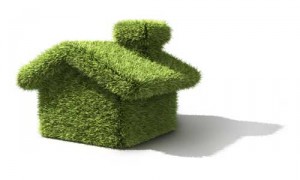
According to new research by McGraw-Hill Construction, green homebuilding has increased exponentially the last six years.
Green homes have been growing more popular with each passing year, and a new study by McGraw-Hill Construction has discovered exponential growth in the industry.
According to its study, officially called “SmartMarket Report: New and Remodeled Green Homes: Transforming the Residential Market,” green homes accounted for 17 percent of the construction market in 2011, or, $17 billion, which is nearly triple that of 2005.
If that pace continues, McGraw-Hill anticipates green homes will rise to 29-38 percent of the market by 2016, a potential market share of $87-$114 billion.
Harvey Bernstein, the vice president of industry insights and alliances at McGraw-Hill Construction, said the power of diversity that “green” allows have been convincing for consumers.
“In the current residential market, there is an enormous need to differentiate your homes for consumers,” Bernstein said. “When builders are able to offer homes that not only are green, but also offer the combination of higher quality and better value, they have a major competitive edge over those building traditional homes.”
Jim Halter, the vice president of Construction Solutions for Waste Management, said the data suggests a shift in the market.
“These findings confirm the shift we’ve seen in the market,” Halter said. “Builders and remodelers are placing more emphasis on energy efficiency, increases in sustainability focused waste management practices and more products made from post-consumer materials. These important factors are pushing our industry forward.”
Bill Styczynksi, the owner of Styczynski Walker & Associates, Architects, a firm based in Westmont, said he has observed a more modest increase in green home construction in the Chicago area, though he does not deny there has been a definite uptick in interest.
Five years ago, Styczynksi explained, green finishings were something he always had to mention to clients. Though they were usually interested in learning more, their intrigue always succeeded Styczynksi’s questioning.
Now, however, clients show much more initiative, and Styczynksi estimates that roughly 20 percent of the buyers his firm consults mention green building on their own accord.
“There is an interest,” Styczynksi said. “It’s definitely heading in the right direction.”
Clients are still conscientious, he added, about the costs of green upgrades, and most often they inquire about such features with a distinct budget in mind. The three biggest draws are energy efficient additions (such as efficient lighting), greater air quality and water conservation, because all lead most directly to savings in energy – and by no sheer chance, those details corresponded perfectly with what McGraw-Hill had discovered. Two-thirds of the builders surveyed for the study reported that customers requested green homes and projects to lower their energy use or save money, more than twice any other factor.
Other details included in the report were:
- Indoor air quality is growing in importance and focus for home builders. 60% of home builders believe that efforts to improve indoor air quality make homes greener than they were two years ago, and 95% of high volume home builders report including features that impact air quality.
- More than half consider durable materials one of the most important features in their homes today. In particular, remodelers emphasize this key aspect of their projects. Durability and better materials are key reasons why green homes and remodeling projects are considered of higher quality.
The report, which produced by McGraw-Hill Construction in conjunction with the NAHB and Waste Management, is designed to provide insights into product and market opportunities in the single-family home building and remodeling industries. It is backed by proprietary research surveys and the power of the McGraw-Hill Construction Dodge database.
Interestingly, an entry on HSH addressed a new source of financing for green projects – the FHA. Through the agency’s energy-efficient mortgage, or EEM, borrowers enlarge their qualification ratios and increase their ability to get an FHA-backed loan, among other benefits.
For instance, the FHA typically allows housing costs that are 31 percent of the borrower’s monthly income, but the EEM allows 33 percent; and regarding overall debt, 43 percent of the individual’s monthly income can go towards housing costs and other credit-related debts, but with the EEM, that number rises to 45 percent.
